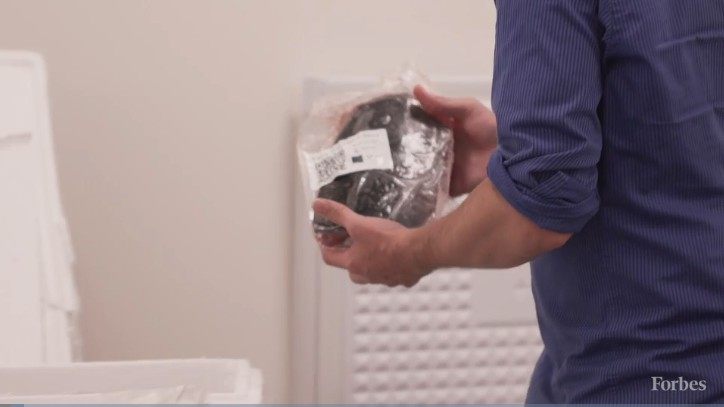
The abstract world of blockchain gets a whole lot more accessible as soon as you start talking about food. All of a sudden, dizzying concepts like consensus mechanisms, hash rates and cryptography melt away, and what you’re left with is a nice juicy steak, cooked medium-rare. There is no bitcoin, ethereum or regulatory oversight, and the only hard forks you encounter are on the dining table.
Forbes decided to put blockchain to a tangible taste test, if you will. We attempted to track an entire meal using the irrefutable ledger entries of blockchain to identify and follow our food ingredients moving from farms in France, the sea off the coast of Fiji, ranches in Wyoming and tropical groves in Colombia to our plates here in metropolitan New York.
The demand for healthy, sustainably produced food is rising globally, and as a result, meal-transparency—especially at high-end eateries and grocers—has tangible marketing benefits. The provenance of the food on your plate matters, and if a blockchain can give you details on the French farmer who grew your tomatoes or provide a glimpse of the prairie grasses that went into your rib eye, it just might make your meal taste sweeter—and command a higher price. There are also important health and safety reasons for tracking food via blockchain. Food-borne illnesses make thousands sick every year and cost businesses an estimated $90 billion in lost revenue.
Multinational corporations like Walmart and Dole have investedheavily in exploring how blockchain can save them money and make their products safer. Tech giants like IBM and Intel are competing to create supply chain networks powered by their proprietary blockchain solutions, and startups are making serious efforts to move various aspects of the food supply chain to truly decentralized, public blockchains.
One of the loudest proponents of using blockchain to make the food supply chain more transparent is Ogden Driskill, a Republican state senator in Wyoming. In May 2018 more than 300 calves from Senator Driskill’s Campstool Ranch were tagged with radio-frequency ID (RFID) chips and are being tracked by BeefChain, a Wyoming startup that uses a number of blockchain platforms to help hold every level of the supply chain accountable.
“By selling blockchain calves, my reputation rides all the way to your plate and it leads to me being much more vigilant about how things go because my name rides with it,” says Senator Driskill, whose family has been running Campstool Ranch for five generations.
Food-borne illnesses make thousands sick every year and cost businesses an estimated $90 billion in lost revenue.
It is this sense of personal accountability and personal connection that supports the value BeefChain and other competitors in the space hope to capitalize on. Because beef is a commodity, the moment a cow enters a holding pen with other cows it loses its identity and much of its value, according to Driskill. Over the course of the past two months 12 million pounds of ground beef were recalled by the U.S. Department of Agriculture. Driskill says those quantities could be greatly reduced if the contaminated meat could be identified more quickly.
To help accomplish this, BeefChain has signed up ten ranches as part of its beta testing, which is being conducted using both IBM Blockchain and a permissioned version of ethereum, the blockchain that supports the ether cryptocurrency. Fifty more ranches are on the waiting list, according to BeefChain cofounder Rob Jennings, who hopes to track more than 50,000 cattle on his blockchain this year.
Sourcing The Dinner Party's Beef
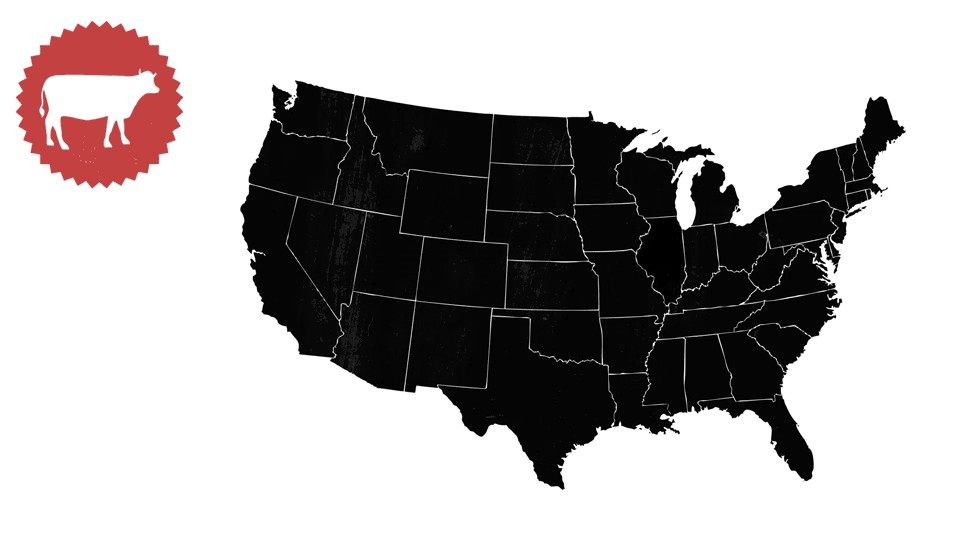
BeefChain senior technologist Kip DeCastro says the process of moving the global beef supply chain to a shared, distributed ledger could not only lead to new business models (such as letting ranchers tokenize the commodity meat and sell it directly to speculators) but also reduce the time needed to identify the source of food poisoning from months to minutes, potentially saving billions of dollars in the U.S.
“If you go to a rancher and ask for his records, they’re just as likely to be in his dad’s pocketbook as they are in an Excel spreadsheet,” says DeCastro, who is also an equity shareholder of BeefChain. “So there’s very little tracking in the industry, which means there’s a lot of inefficiency and ranchers can’t materialize the full value of their product.” Last year 11,400 Wyoming farms generated $1.1 billion in cattle sales, and the U.S. cattle industry generates $76.6 billion revenue according to the most recent agriculture census.
To better understand how the process might eventually look, Carter Country Meats, an early user of BeefChain, shipped two double dry-aged 6-inch bone-in tomahawk rib eye 107s to Forbes. While the rib eyes were born before BeefChain was implemented, rancher RC Carter told Forbes that the animal entered onto BeefChain in Ten Sleep, Wyoming, on July 30, 2018. The rib eyes came from animal 840003199807394, which was processed at Double J Meat in Pierce, Colorado, on August 2, 2018. The rib eyes were then transferred to Lombardi Brothers Meats in Denver and dry aged for an additional 28 days.
The process of moving the global beef supply chain to a shared, distributed ledger could potentially save billions of dollars in the U.S.
Had blockchain been available to the ranch at the animal’s birth, it would show that she was born on April 21, 2010, in Ten Sleep, where she lived her entire life on ranchland in the Big Horn Basin. On January 11, 2011, she was vaccinated. She raised six calves and on June 2, 2018, received a seven-way vaccination as prevention against maladies like black disease and gas gangrene, a few months before she was slaughtered. Finally, on November 1, 2018, a beefsteak from her rib section was selected to be sent to Forbes via UPS.
“Using a blockchain, you don’t have to trust that the data and information that I’m recording is accurate,” says DeCastro. “It’s like we’re at a football game, and everyone’s watching the scoreboard.”
Perhaps no one understands the business implications of using a shared, immutable ledger to track food better than Robert Scharff, an associate professor in the Department of Human Sciences at Ohio State University and a former regulatory economist for the U.S. Food & Drug Administration (FDA). Over the course of Scharff’s 20-year career, he has worked for both the public and private sectors to comprehensively determine the costs of food poisoning and whether the benefits of regulation were worth it.
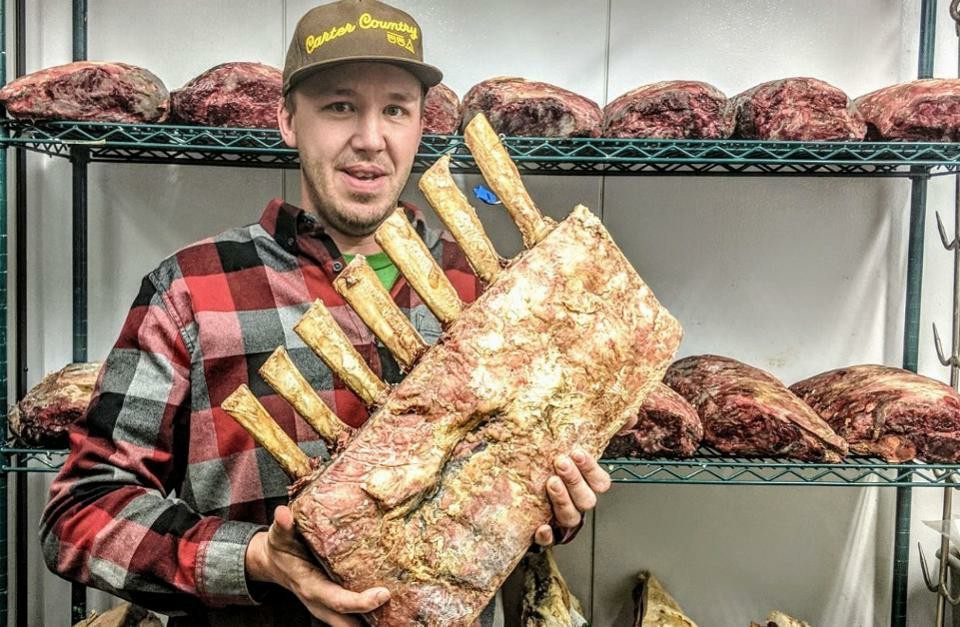
In 2015 Scharff published the results of his work in the most detailed study to date of the financial impact of food-borne illnesses, concluding that the United States loses at least $55.5 billion annually as a result of fatal poisonings. When pain and suffering resulting from food-poisoning illness are included, the number almost doubles to $93.2 billion.
In one of Scharff’s highest-profile projects, he helped the FDA create the Egg Safety Rule, implemented in September 2009 to stop the spread of salmonella. By controlling how hatcheries deal with eggs, the FDA estimates the rule prevents 79,000 cases of food-borne illness and 30 deaths each year. But that’s just eggs, and just in the United States. When expanding the impact of food poisoning to all food in the U.S., the Centers for Disease Control estimates the numbers increase to 128,000 hospitalizations and 3,000 deaths. Globally, the World Health Organization estimates that tainted food causes 600 million illnesses annually and 420,000 deaths. According to Scharff, widespread use of blockchain could help make the potentially lethal process of moving food supply safer.
“Right now, if you look at a lot of these outbreaks, we do eventually identify the source, but often it’s after everybody’s gotten sick,” he says. “So if you can identify it more quickly and get back to the origin before people get sick, you can potentially reduce the number of illnesses.” Not only would this help prevent reputable ranches from being implicated in poisonings they had nothing to do with, but it would prevent retailers from having to pull safe goods from their shelves.
In addition to the tainted ground beef mentioned by Senator Driskill, 2018 saw several high-profile episodes of food poisoning, including at least 210 instances of E. coli from infected heads of Romaine lettuce and outbreaks of salmonella in turkey and raw chicken. Since 2015, Chipotle’s various food safety problems have wiped out 46% of its market capitalization, as its stock price fell from its all-time high of $23.4 billion to $12.6 billion today.
Sourcing The Dinner Party's Chicken
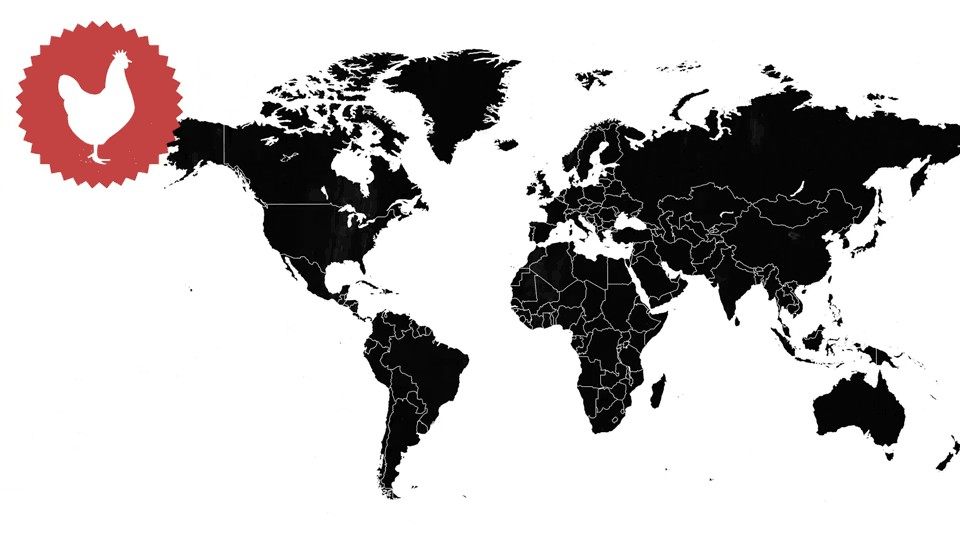
Poultry is already being tracked using blockchain by Carrefour. The French grocery giant, a member of the Food Trust network IBM created to help streamline its supply chains, earlier this year became the first food company to use the commercial version of IBM Blockchain. To demonstrate how the supply chain works on a shared, distributed ledger, Carrefour sent packaging from three of its products to Forbes, a whole chicken, a half-dozen free-range eggs, and three pesticide-free Cauralina tomatoes.
A QR code visible on the chicken packaging led to a website showing that the egg the chicken hatched from was incubated in Burgundy, France, until July 27. The chick was shipped to the town of Lusigny in central France, where farmer Vincent de la Serre fed it a mixture of cereal and soy. Then, 84 days after it was born, the chicken was slaughtered in Saint-Germain-de-Fossés, packaged, and stocked at a Carrefour grocery store in Brie-Comte-Robert, a commune in the north of France.
One of the key differences between the blockchain supply chain platforms currently being explored is whether they rely on private blockchains—perhaps better described as distributed ledgers—that require permission to access, such as IBM Blockchain, or public, “permissionless” versions like ethereum. Because many companies in the food supply chain don’t want their inventory broadcast to the outside world, companies like Brooklyn-based Viant are building permissioned components on top of the public ethereum blockchain.
“The blockchain architecture a company chooses will vary based on the level of trust desired,” says Viant cofounder Tyler Mulvihill. “In the context of the food supply chain, we are seeing many of our enterprise customers opt for developing private blockchains. As they become comfortable with the technology, they look over the fence at the public blockchain option.”
To give an example of how this looks in the $11 billion tuna industry, during a recent two-week voyage, a vessel, Sea Beluga, that belongs to a commercial fishing outfit, Sea Quest Fiji, caught a Thunnus albacares, better known as a yellowfin tuna, off the coast of Fiji. Fijian supply chain company TraSeable used the Viant platform to log the data on the public ethereum blockchain. After the giant fish was partially cleaned, the blockchain shows it weighed 56.87 pounds. Everything from the vessel’s call number to its permit number are included in the record. After the fish was unloaded at the port of Suva, Fiji, on October 31, it was processed and given FDA number 13036613000. Finally, a grader named William gave the fish a B grade and sent it to the port of Los Angeles, from where it was sent via FedEx to Forbes’ offices in Jersey City, New Jersey.
Sourcing The Dinner Party's Seafood
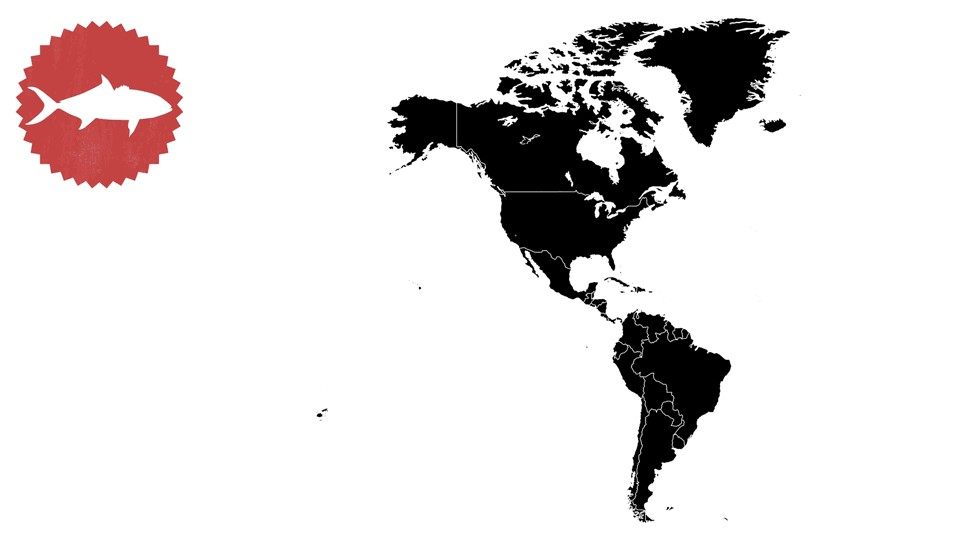
Some of the largest food companies in the world are exploring how to use blockchain to improve their supply chains in a variety of ways. Already, Swiss food giant Nestlé has completed a pilot for its Gerber baby food and has plans to add a number of new blockchain efforts in 2019. In Nestlé’s existing Gerber baby food pilot using IBM Blockchain, a can of mango baby food purchased by Forbes at a Walmart in Secaucus, New Jersey, was traced back to May 31, 2017, the date the mangos were harvested on a farm in coastal Colombia.
Nestlé plans to expand its blockchain research next year to include how public blockchains like ethereum might also be leveraged, according to Benjamin Dubois, the company’s head of blockchain experiments. Dubois says Nestlé wants to learn whether a public blockchain like ethereum could “interoperate” with the permissioned Hyperledger Fabric that powers IBM’s blockchain technology. He also plans to explore how international shipping ports and organic food certificates could be integrated into a truly global, shared platform.
“Next year we are looking at how we can go a bit wider so we can employ blockchain across the value chain, from the farm to the fork.”








